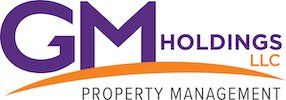How To Stop Cold Air Leaks (Proven Tips)
How To Stop Cold Air Leaks: Housewarming Tips for Winter
We put together this guide to help you save money and learn how to stop cold air leaks. It cannot be stated enough how much of costly burden air leakage is on the common household. Accounting for approximately 25-40% of the energy used on cooling and heating, leakages can be a huge money waster.
Bad ducts can leave even wider openings, sending 60% of a home’s hot air out into the open. These cost leaks can be especially brutal through weather extremes in the summer and winter.
Fortunately, homeowners and renters can seal most of these weak leakage spots on their own, without any elaborate maintenance work or the assistance of an HVAC technician . It’s easy to drain hot air out of your home if you’re not careful. It’s also easy to retain it if you take the right steps.
Seal Openings
A household can contain a plethora of openings for cold air to seep through. The common sense starting point is to focus on doors and windows. Don’t unnecessarily leave them open and double check that you aren’t letting a draft creep through their crevices. There are multiple ways to test air pressurization, but one of the simplest involves placing a dollar bill under your window or door. If you can effortlessly remove the dollar with no “pull” behind it, then that’s a sign that those gaps need to be sealed tighter.
Pulley seals, rubber adhesive, sweeps, and temporary caulk can all be effective solutions to alleviate door and window drafts. The strongest form of sealant is bronze weather stripping. While far more expensive and time-consuming to install, is capable of lasting for decades.
Typically, building codes require at least 1-2 inches between wood paneling and chimney flues, but even a small gap can let hot air out and cold air in. The main opening can be sealed relatively easily with a fireplace draft stopper plug. Whether it’s undertaken as a DIY project or outsourced to a licensed contractor, apply silicone caulk or install aluminum flashing around the chimney.
Look for the Less Obvious Cold Air Leaks
As tedious as it can be, you may need to do an additional inspection to take care of all the cracks and air leakage inside and outside your home. Common exterior regions where cracks and gaps can open up include exterior corners, outdoor faucets, the areas where siding and chimneys overlap, and any region where the foundations and sidings meet.
Less overt spots for potential interior gaps include electrical lines, outlets, switch plates, vents, basement foundation, and attic hatches. You can plug most of these interior and exterior openings with caulk or foam sealant. You should take care of attic hatch doors with weather stripping, and outlets with rubber gaskets. To seal these areas as tight as possible, light a candle, incense stick, or another source of the smoke, and move it by the corners where leak spots are.
If the smoke wavers or blows toward a particular area, that could be indicative of a draft and improperly applied sealing. If you still notice a draft after reapplication, you should consider replacing the windows/doors/faulty equipment with newer, higher quality parts. Inversely, bad ductwork can leak out hot air and present a whole host of combustion safety issues, but in most cases, it can be fixed relatively swiftly by metallic tape or sealant spray, whether applied by you or an HVAC technician.
Insulate Your Lights
Believe it or not, electricity isn’t the only utility bill that your lighting can hemorrhage if you aren’t careful. ICAT lights (insulation contact and airtight) feature a strong seal. LED recessed lights can hurt your home’s ability to retain hot air. These types of lights often draft it up through the attic via the several foundational holes it takes to install them.
The average home circuit has a capacity for 30 recessed lights and it can add up if left unchecked. Fortunately, you can fix this elatively easily and efficiently with an airtight baffle.
Simply place the baffle inside the housing with the bulb removed, reinstall a new bulb, and you’re good to go. For an even more foolproof defense from updraft, place a cover over the recessed light, and that will ensure that your home’s lighting has a barrier from letting any air leak, saving you time, money, hot air, and headaches.





